What are the physical signs of having lung cancer?
To detect lung cancer at an early stage, it is not reliable to rely on physical manifestations, I will introduce a method to you. Lung cancer is a kind of cancer with the highest incidence rate in China at present, and the mortality rate of lung cancer patients is very high. This is because lung cancer usually does not have any symptom or no obvious symptom in the early stage, and once we find it, it is often in the late stage, so the mortality rate is high.
So yeah, trying to detect lung cancer early by physical manifestations is not going to work! In fact, I think, to detect cancer early, use this method I have below--Determine if you are at high risk for lung cancer (that is, people who are prone to lung cancer) and then have regular targeted checkups. I'll give you some information below.
So who is at high risk for lung cancer and should be on guard?
1. There are multiple lung cancer patients in the family, especially if there are lung cancer patients in the immediate family.
We know that cancer is related to our genes, that is, to our heredity, and if more than one person in one's family has lung cancer, it means that one is also at high risk for lung cancer and must be vigilant.
2. Long-term smokers
Cigarettes, something that is identified to trigger lung cancer. It is currently believed that long-term smokers are susceptible to lung cancer. One of the classic indicators of this is called 400 years of cigarettes. What is this concept? It means that if a person smokes about 10 cigarettes a day and has been smoking for 40 years, 10 cigarettes/day x 40 years = 400 years of cigarettes. After 400 years of smoking, the risk of lung cancer increases dramatically. Smokers can count how many they have smoked now.
3. Persons older than 40 years of age
Lung cancer now occurs mainly in people over the age of 40, with fewer lung cancer patients before the age of 40.
4. People who have been engaged in some toxic and harmful work for a long time.
For example, asbestos workers, coal miners, sanitation workers, traffic police, cooks, painters, printers, etc. People engaged in these jobs will come into contact with a large number of toxic and harmful substances, which can easily lead to lung cancer. We should not ignore the toxicity of oil smoke, there are many lung cancer patients who are chefs, and I have written an article about oil smoke and lung cancer before, so when you are cooking, you must do a good job of ventilation in the kitchen.
5. People with long-term mental depression, high mental stress and high work intensity are more likely to develop cancer
6. Living in cities with heavy air pollution. For example, the northern heavy industrial city of Hebei has very serious air pollution and high incidence of lung cancer.
7. Patients with chronic lung diseases, such as chronic obstructive pulmonary disease and tuberculosis, are prone to lung cancer.
Several of the above groups of people are susceptible to lung cancer, and if the more people hit the mark, then the greater the risk, then the greater the need for regular lung cancer screenings.Lung cancer screening is also as simple as regular low-dose spiral CT scans of the chest
One of my teachers, that's what he is, 50 years old, big smoker, and works a lot, and has someone in his family with lung cancer, so he goes for annual lung cancer screenings. Unfortunately he found lung cancer the year before last during the screening, luckily it was caught early and the surgery has done very well so far. He is now recovering well and continues to operate on patients.
And finally, a brief description of the physical manifestations that can occur in lung cancer patients
1. Cough. This is the most common symptom of lung cancer, which is also very atypical. Many common diseases and even small colds can cause cough, so it is easy to be neglected. Therefore, it is easy to be neglected. Moreover, when there is coughing symptom, lung cancer is often in the middle or late stage.
2. Coughing up blood. Lung cancer destroys small blood vessels inside the lungs, which will cause coughing up blood, and if it destroys large blood vessels, it will cause a lot of coughing up blood, which can even be fatal.
3. Difficulty in breathing. A mass compresses the lungs, of course, it will be difficult to breathe, but it is also necessary for the lung cancer to grow to a certain extent to cause this symptom.
4. Wasting away
5. Metastatic symptoms. Lung cancer can easily metastasize to the brain, causing headache, vomiting and impaired consciousness, and it can also metastasize to the bone, causing bone pain.
By the time these symptoms appear, lung cancer has often grown very large. Therefore, it is hoped that those who are at high risk of lung cancer will undergo regular checkups for early detection and early treatment, which will be much more effective.
Hello, I am an internist and lung cancer, the number one cancer, has mercilessly claimed many lives. Lung cancer is also the leading cause of cancer-related deaths worldwide. It is the most common primary malignant tumor of the lungs. With the increase of people's health awareness, a large number of patients with lung nodules are screened out every year. What are the signs that will appear in the body when you have lung cancer? I will talk about my opinion below.
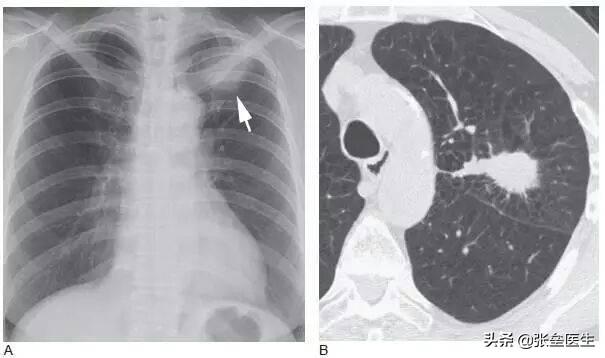
A brief introduction to lung cancer
First of all, let's divide lung cancer into small cell and non-small cell cancers based on the tissue, which develops around 55-66 years of age, and shows aCharacterized by more males than females, their ratio is about 2.1:1. Clinically, its symptoms are actually very insidious, and many people go to the doctor only when they develop cough, sputum, hemoptysis, emaciation, and other manifestations in the middle and late stages. There are relevant epidemiologic data showing thatSeventy-five percent of patients are already in the advanced stages of lung cancer when they are diagnosed, and collectively, their 5-year survival rate is less than 20%, so early diagnosis and standardized treatment are crucial.
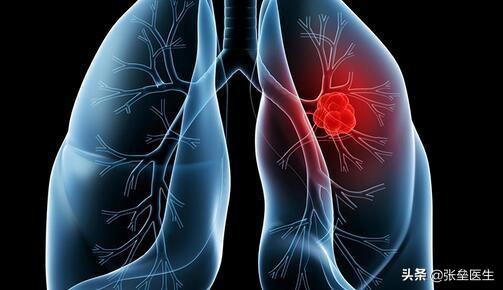
Why do you get lung cancer?
● The issue is worth pondering, but it is hard to get away from smoking. This is because it has been found thatAbout 85% of people who develop lung cancer have a history of smoking.This is especially true for younger age of smoking initiation, longer duration of smoking, and higher daily cigarette consumption... Compared to non-smokers, the risk of lung cancer is on average 10 times higher in smokers and 10-25 times higher in severe cases.
●At this point, some of you may say, "So-and-so is a woman who has never smoked, so why would she get lung cancer? In fact, there is one thing that we can easily overlook, and that is second-hand smoke/passive smoking. Relevant data show that the risk of lung cancer increases by 20-30% when a non-smoker and a smoker are married and live together for many years, and the risk of lung cancer increases with the amount of cigarettes smoked by the spouse.The International Health Organization has long listed tobacco as a class A carcinogen, and I believe we have all found that in recent years, the country's efforts to control smoking in public places have become more and more vigorous, and it has long been a consensus that smoking is hazardous to health.

At this point, some people may say, "Whoever does not smoke and there is no second-hand smoke around, how can they still get lung cancer? This actually involves the second reason, which is occupational carcinogenic factors. For example, asbestos, arsenic, bichloromethyl ether, chromium, mustard gas, polycyclic aromatic hydrocarbons.As well as radon and radon gas produced during the decay of radioactive substances such as radium and uranium, ionizing radiation, microwave radiation, etc. will increase the risk of lung cancer by 3-30 times.
● Secondly, it is related to outdoor environmental pollution (industrial exhaust in cities, automobile exhaust, etc.), indoor environmental pollution (indoor passive smoking, fuel combustion, cooking process can produce carcinogens, which have a greater impact on women's adenocarcinomas), as well as some ionizing radiations, heredity and genetic changes.So in summary, the etiology and pathogenesis of lung cancer is not very well defined, but there is a significant correlation between these risk factors that I talked about above.

What are the signs of having lung cancer?
● First of all, I have to throw cold water on the idea that, as I mentioned above, a lot of people find out that lung cancer doesn't actually have any symptoms.Therefore, it is not objective to judge whether you are suffering from lung cancer by certain signs, which you must bear in mind.In fact, the solution is very simple, regular medical checkups, do some blood tests for lung malignancy and lung CT to see if you canFinding lung shadows, malignant nodules, etc. is a very good screening tool.
● Sign 1: Coughing.The nature of the cough is mainly irritating dry cough without sputum or less sputum, if the tumor causes bronchial stenosis, it will also aggravate the cough, if it is mucinous adenocarcinoma, there can be a large amount of mucus sputum, and the amount of sputum will be increased when accompanied with secondary infections (e.g. getting cold, catching a cold) and it will be mucus and purulent.
Sign 2: Blood in the sputumThis is because the tumor grows into the lumen of the tube. If hemoptysis occurs, it is mostly because the surface of the lumen is seriously eroded and has invaded the large blood vessels; if shortness of breath and wheezing occur, it is mostly because the tumor grows into the trachea and bronchus, causing the obstruction of the airway; if the tumor has metastasized widely, it will also have the signs of dyspnea, shortness of breath, and so on.
:: Other signs.If the tumor has metastasized or invaded our pleura or chest wall, there will be irregular dull, vague or sharp pains, which will be aggravated by breathing or coughing, and if the tumor has directly or metastasized to the mediastinal lymph nodes afterCompression of the recurrent laryngeal nerve paralyzes the vocal cords.that causes hoarseness.If the tumor invades our esophagus, signs such as difficulty in swallowing and inability to eat can occur.
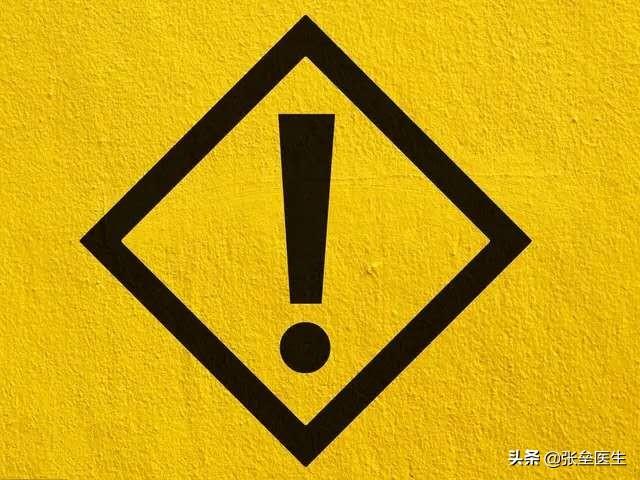
Aggregate summary
For lung cancer, as a non-professional medical practitioner, there is actually no need to know too much about which which symptoms or the so-called signs, because clinically the same disease may have different symptoms, and different diseases may have the same symptoms, and the ordinary people will also increase their psychological pressure for no reason when they look at them.Personally, I think we should focus on preventing the high risk factors of lung cancer (e.g. quitting smoking, refusing second-hand smoke, occupational carcinogens, etc.), and regular health checkups are the right solution.
Author's Message:This response does not constitute a recommendation for medical treatment, nor does it constitute medical guidance.For health science purposes only.. Summarized from personal experience, not added to columns, gratuitous and free for all to read. I hope this has been helpful. Don't be mean if you learned.Give it a like, retweet it to help more people, and thanks for the support.

What are the symptoms in your body that indicate you have lung cancer?
Lung cancer usually refers to primary malignant tumor of lungs, which is the most common and highly prevalent cancer in the city, and it usually starts quietly, and there are usually no hints of symptoms before and at the time of lung cancer and in the early stage of lung cancer, even if lung cancer progresses and symptoms appear, it is easy to be neglected without paying attention to it and lead to delay of the condition, so more than half of the patients with lung cancer go to hospitals to see the doctor for checkups. Therefore, more than half of the lung cancer patients have entered the advanced stage by the time they go to the hospital for examination.

So when people experience those symptoms, it may indicate that lung cancer is on the way?
About 5~15 out of 100 people who are diagnosed with lung cancer do not have any discomfort, that is to say, they do not have any signs and symptoms, and are usually diagnosed after medical checkups or chest radiographs or chest CT examinations for other reasons. Especially peripheral lung cancer does not have any symptom in the early stage, but along with the continuous growth of the tumor, especially when the tumor occupies and infringes on the bronchial tubes, there may be the following symptoms When the tumor grows continuously, especially when it occupies and invades and presses into the bronchial tubes, it may appear.
Paroxysmal irritating dry cough or paroxysmal irritating choking cough, no sputum or sputum sputum is not much, for a little foamy sputum, it is easy to be taken for granted that it is a common cold and flu, and treated as a common cold, which is not only ineffective in the treatment but also delayed the condition. When the tumor grows up to block the trachea and affect the drainage of sputum, it can be secondary to lung infection, which is known as obstructive pneumonia, and the sputum amount of patients will increase and mucopurulent sputum will appear. In addition to the increase in sputum volume and purulent sputum, there will be chest tightness, shortness of breath, even wheezing and croup, fever, dull or vague chest pain, or undescribable pain in the chest, which can radiate to the back of the shoulder, and the pain can be aggravated with breathing or coughing up sputum.
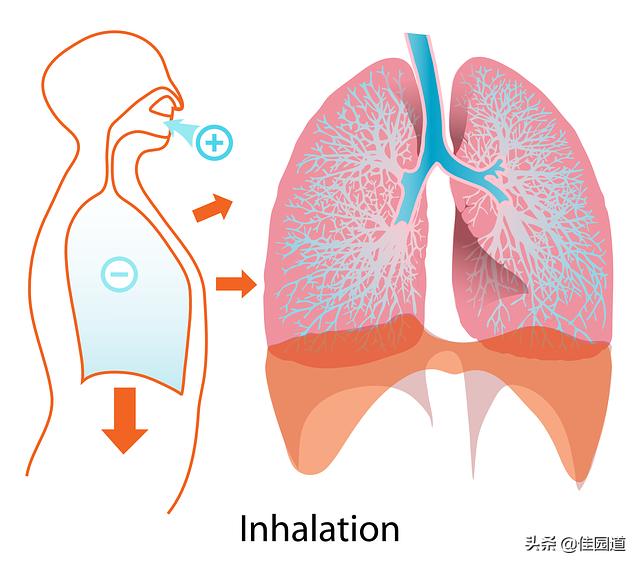
Another common symptom is bloody sputum or hemoptysis, which is usually characterized by blood spots in the sputum, blood in the sputum or intermittent hemoptysis of small amounts, hemoptysis is rare, but can still be seen occasionally.
Manifestations of invasion or compression of adjacent organs and tissues.
Tumor invasion and compression of esophagus can cause difficulty in swallowing food, invasion and compression of left recurrent laryngeal nerve can cause vocal cord paralysis and hoarseness, invasion and compression of superior vena cava can cause obstruction of blood reflux, patients can have edema of neck, face and upper limbs, and exposure of veins on chest wall, and those with severe invasion and compression can have dizziness, dizziness, headache, blurred vision, conjunctival congestion and edema, and those with lung cancer in lung tip can have low or no sweating, pupil narrowing, and eyelid drooping on one side of the affected side. If lung cancer invades and presses the sympathetic nerve in the neck, it can lead to little or no sweat on the frontal area and chest wall of the same side, cause the eyelid of the diseased side to appear drooping, the eyeballs to appear inward, the pupils to appear narrowing, and invade the pleura to cause hemorrhagic pleural fluid.
Occurrence of manifestations in liver, bone, brain, subcutaneous, etc.
For example, metastasis to the liver may cause pain in the liver area, hepatomegaly, yellow staining of the skin and mucous membranes and sclera, ascites, loss of appetite or lack of appetite, metastasis to the bone may cause localized bone pain, compression pain or even spontaneous pathological fracture, and metastasis to the brain may cause dizziness, headache, nausea, and vomiting, spinning of the head, double vision, or even hemiplegia such as weakness of one side of the limbs and hemiparesis. In addition, there may be convulsions, mental and psychological changes, and abnormal changes in personality, behavior, demeanor and speech.
Extrapulmonary manifestations of male friends appear breast hyperplasia and development, dermatomyositis, dark skin without light, but also can appear long-lasting, unexplained non-wandering joint pain, drumstick finger.
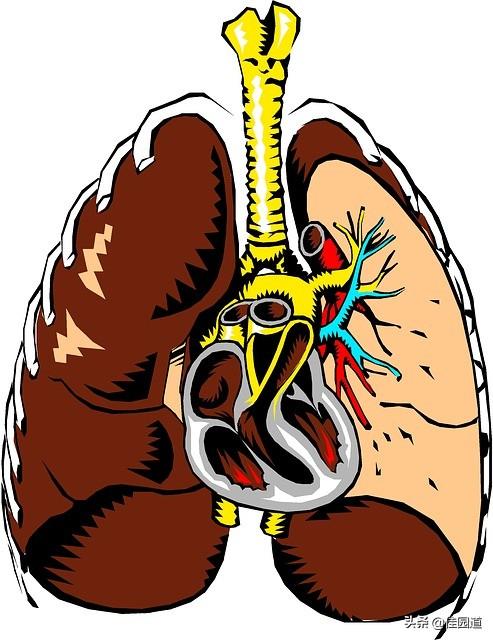
From the above, we can see that there are many symptoms of lung cancer, but more or less there are still traces to follow. If there is a persistent irritating dry cough or irritating choking cough without or with little sputum, blood in sputum or a small amount of hemoptysis in the sputum, unexplained shortness of breath and wheezing, or unexplained pestle and mortar finger, no roaming joint pain, especially for people who have smoked for long periods of time, engaged in high-risk work such as asbestos, or people who have had cancer or have family heredity, then we need to raise vigilance and pay close attention to it. Or people who have had cancer or have a family heredity of lung cancer, if the above manifestations are not relieved by treatment for more than two weeks or the improvement is not obvious, it is necessary to raise vigilance and pay close attention.
To know what are the signs and symptoms of lung cancer is in fact to be able to detect lung cancer earlier or to prevent lung cancer earlier, which also reflects that lung cancer is a very dangerous cancer, the mortality rate and incidence rate are second to none, and it is a disease that everyone talks about, after all, there is no big progress in the treatment nowadays. After all, there is no big progress in the treatment nowadays. Below I am going to talk about what are the signs and symptoms of lung cancer, what are the high-risk factors of lung cancer and how to treat lung cancer.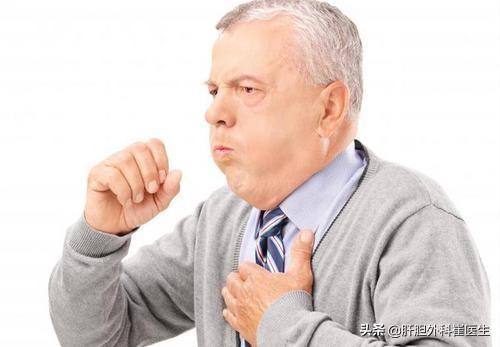
So what are the signs of lung cancer?
- In fact, I'm always one to throw cold water, and this time I'm throwing cold water atLung cancer has very few symptoms in its early stages., which leads to an evil that has aboutTwo-thirds of lung cancer patients are already at an advanced stage when it is detectedThis is also one of the reasons why the mortality rate of lung cancer is very high. This is because many lung cancer patients may not come to the doctor with symptoms caused by lung cancer itself, but with metastases to other organs or organs, or with systemic symptoms and accompanying symptoms such asHoarseness of voice, coarseness of fingers, pneumonia, etc.It is difficult to detect the presence of lung cancer in the early stages of the disease.
- Not that lung cancer itself doesn't cause symptoms, of course; it's just thatAbout less than 30% of lung cancer patients will experience symptoms caused by the lung cancer itselfAnd it is also related to the location of the lung cancer, if it is the central type of lung cancer, it is possible to have the manifestation of irritating cough.An irritating dry cough is a continuous cough that occurs for no apparent reason.It's like smelling something with an irritating odor (paprika, smelly socks, high alcohol, etc.); also, patients may experience varying degrees of breath-holding, and then there's the fact that some peopleCoughing up blood., and, of course, many people also develop long-lasting, recurring pneumonia of the same lobe of the lung, which manifests itself when the tumor enlarges or infiltrates nerves or veins with the appearance of a voiceHoarseness, intractable hiccups, edema and other manifestations. And peripheral type of lung cancer is more likely to have chest pain or pleural effusion, breath-holding and so on. And if the lesion is too large, necrosis, liquefaction and suppuration of tumor tissue may occur.

Although there are few early signs of lung cancer, we can learn about the risk factors for lung cancer so that we can prevent it
1. The relationship between daily diet and lung cancer is also more subtle, and it is now confirmed that theEating fruits and vegetables regularly will prevent lung cancer to some extent.This is because there are antioxidants and micronutrients in these types of foods that can play a preventive role by reducing DNA damage in the body. But I would also like to emphasize that drinking alcohol is not only harmful to the liver, but also increases the risk of lung cancer, but this is in conjunction with smoking, which means that drinking alcohol alone has not been found to increase the incidence of lung cancer.
2. The factor of occupational relevance also has to be emphasized, as manyOccupational exposure is something that increases the risk of lung cancerThe following have been confirmedAsbestos processing industry, long-term exposure to various types of dust, ionizing radiation of various types of chromium, nickel, soot, etc., as well as people engaged in various mining workThere is another group of people who cannot be left out, and that is thePainter, so there's still stains on the wood paint.It's very bad. But then again, it's all about making a living, after all.

3. National effortsTreating the environment and air pollution is very much on point.Because environmental and atmospheric pollution is a risk factor for lung cancer, the air inside the city is bad mostly because of automobile exhaust, factory exhaust, and exhaust from thermal heating, while indoor air pollution mainly includesSmoking by individuals, fumes from home kitchens, etc.It is also worth mentioning that indoor air pollution has a greater impact on the development of lung cancer in women, which may be related to the fact that women are more susceptible to lung cancer during the course of their lives.Kitchen cooking for a long time, inhaling too much fumes (various types of cooking oil, frying vegetables produce different fumes).
4,Heredity has a part to play in the development of lung cancerBecause of the early discovery that family members of patients who have had lung cancer in the past are more likely to get lung cancer, the family incidence is higher, but also may be a family living environment and diet and other factors are similar related to lung cancer is the number one cause of death of malignant tumors.Smoking, on the other hand, is the main environmental factor that influences theWhereas each individual responds differently to the carcinogenicity of smoking.conflict withThe family's genes are involved, which explains why some people smoke all their lives and nothing happens to them.

5,The impact of smoking on the development of lung cancer cannot be ignored, is also one of the most significant risk factors, as at least 80% of men with lung cancer and half of women with lung cancer are not unrelated to smoking, and both are positively correlated.The more cigarettes you smoke, the longer you smoke, and the earlier you smoke, the greater the effects ofThis also includes people who inhale second hand smoke and it has a better effect once smoking is reduced, so that's why I'm the least in favor of smoking.
With regard to the treatment of lung cancer, there are several options
1,The preferred treatment option is surgeryMoreover, radical surgery is a possible cure for lung cancer, and it is also the only possible cure, of course, it is mainly applicable to the early stage. But it does not mean that it is already in the advanced stage, with metastasis or invasion that surgery cannot be done, it is also possible to have surgery, but the effect of the surgery will not be very good, but the surgery is a kind of trauma, and the surgery is the only way to cure lung cancer.Especially for the old and infirm, after all, the lungs have to be cut, and many can't stand it.And many patients experience recurrence within a few years of surgery. Nowadays, there are minimally invasive surgical treatments, which relatively reduces the trauma of surgery to the patient, but not everyone is suitable for it.
2、Since many lung cancer patients are found at the time ofIt's late.So it is.Chemotherapy then becomes the primary treatment.Of course patients who have had surgical removal are also treated with chemotherapy, except for very early stage patients. But chemotherapy is also very painful and the cost of treatment is not low either, and many patients give up when they can't stand the torture of multiple rounds of chemotherapy.However, adherence to chemotherapy does enhance the quality and duration of survival and is worth applying to lung cancer patients.

3,Radiotherapy is also a relatively effective treatmentThe first step is to improve the quality of life of patients who do not want to undergo surgery. It is possible to delay the symptoms and disease development of patients to a certain extent, improve the quality of life, improve survival, for patients who do not want to operate or can not be operated is more suitable.But the results are certainly not as good as surgery there is no doubt about that.
4,Targeted therapies have become very popular in recent years, and they're also a bit more competitive, thestill more effective, but not much for small cell carcinoma.Mainly for non-small cell lung cancer, such as gefitinib, erlotinib and so on, which is still relevant for patients with advanced lung cancer, can improve survival to a certain extent, but it is about a few months, not prolonged for a long time, and it is also more expensive, which is not affordable for the general public.

Finally, I hope that you can take effective prevention against the triggers of lung cancer and do not take it lightly.
Aside from the cough, name two that are less frequently mentioned by responders.
The three signs of serious lung disease are often not escaped
1. Skin
According to Chinese medicine, "the lungs are in charge of the skin and hair". Our skin, hair, including the opening and closing of pores are dominated by the lung's pronounced function, which also includes skin metabolism and sweat secretion.
Therefore, if one's skin lacks moisturization and is dry and dull, it is a reflection of the excessive accumulation of toxins in the lungs and their blockage;
Lungs are the vessel of phlegm, and "phlegm" is the basis of tumors, and the formation of tumors is mostly interpreted as "phlegm and stagnation of phlegm" in traditional Chinese medicine.
2. Constipation
When first talking about the relationship between the lungs and the skin, there may be a question mark on someone's face, and this time 80% added another question mark. Because from the position of the organ, it seems to be even further away.
However, in Chinese medicine, the lungs and the large intestine are related to each other, whether it is diarrhea, or dryness to pass stools, are related to the lungs.
Lung qi does not propagate, can not pass and regulate the water channels, water stops in the bladder is not favorable for urination, water into the large intestine more will be diarrhea;
When lung heat is not eliminated, it causes dryness, which is why many patients with pneumonia also experience constipation.
So anyone with chronic diarrhea or dryness should also consider the lungs.
3. Cough
The causes of coughing are complex and numerous, so here I would like to briefly describe two points of comparison between lung cancer cough and common cough:
Comparison (1): Ordinary cough does not last long, and it usually returns to normal in about 3 weeks after medication and life management. On the other hand, cough caused by lung cancer will last longer, and even if there is an improvement, it will be repeated and keep dragging on and refusing to get well.
Most of the coughs caused by lung cancer will last for more than three weeks or even longer. If you have a cough that has not improved despite many measures taken, you need to pay extra attention to it.
Comparison (2): A common cough, even if it progresses to a more severe stage, such as when there is inflammation occurring, produces some sputum, but it gradually decreases with the use of medication.
The cough caused by lung cancer is usually an irritating dry cough, which can be felt as a foreign substance in the throat, which just can't be coughed up and the throat is not refreshing. There are also a small number of patients with sputum, mostly white foamy sputum or yellow thick sputum, and even some of them have blood color in their sputum.
The key to coughing up lung cancer lies in the "exceptions"The words.Unlike the silent liver, lung problems will "gongs and drums", and this kind of abnormality is not only difficult for yourself, the people around you will easily notice, so in yourself and others feel that the cough strength "wrong", do not consult a doctor to check what to wait! What is it?
Lung cancer is a cancer with relatively high morbidity and mortality rate in China, and many patients are diagnosed with lung cancer and die of lung cancer every year, but some data show that most of the newly diagnosed lung cancer patients are in the middle or late stage. Then, why are so many lung cancer patients found in the middle or late stage? Does lung cancer occur silently? Are there no symptoms in the early stage of lung cancer? What are the symptoms that indicate lung cancer? Below, I will talk about these questions about lung cancer with you.
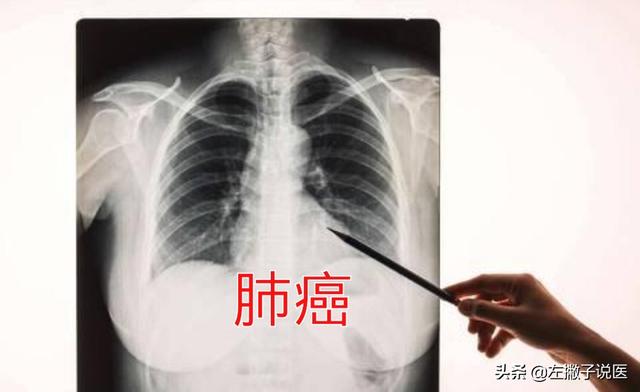
A. Do all lung cancers occur silently? Are there any early symptoms?
In fact, lung cancer does not always occur silently, depending on the part of the lung where it grows and the early or late stage of the lung cancer.
If the early lung cancer belongs to central type lung cancer, because this malignant tumor is growing on top of some relatively large bronchial tubes, as long as this growing malignant tumor constantly stimulates the bronchial tubes of our lungs, then it will cause persistent cough. Because these larger bronchial tubes are more sensitive to foreign bodies that do not belong to the lungs, just as our bronchial tubes choked into some grains of rice, then it will continue to stimulate the bronchial tubes to cause a persistent dry cough, have to cough up these grains of rice before giving up. The malignant tumor above the bronchial tubes is also the same, which is also belongs to the foreign matter inside the lungs, it constantly stimulates the bronchial tubes to cause coughing, so there will be a persistent dry cough, this kind of cough can last for a long time, half a month, a month, or even more than a few months.
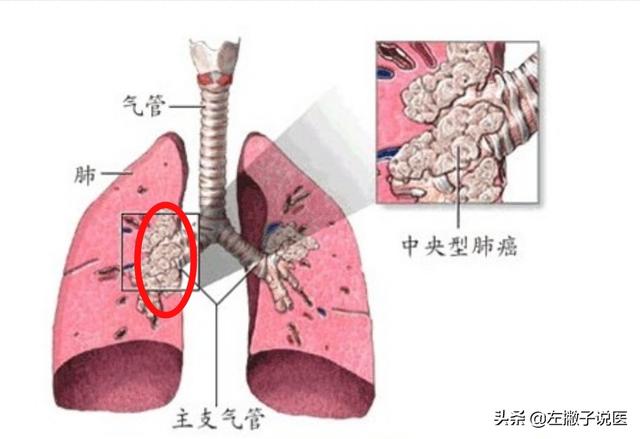
If there is a persistent dry cough, and it has been a long time, then it should be taken seriously, do not think that this is bronchitis or cold caused by the cough, this may be the early lung cancer to give you a distress signal.
If lung cancer belongs to peripheral lung cancer, its occurrence may be silent, this is because it is different from central lung cancer, because it is a malignant tumor that grows in some terminal tiny bronchial tubes or lung tissues, these tissues, compared with the large bronchial tubes, do not cause persistent dry cough, which makes it difficult for us to find the abnormality. Therefore, very often, peripheral lung cancer cannot be detected at an early stage, and when it is detected, it has already developed into middle and late stages.
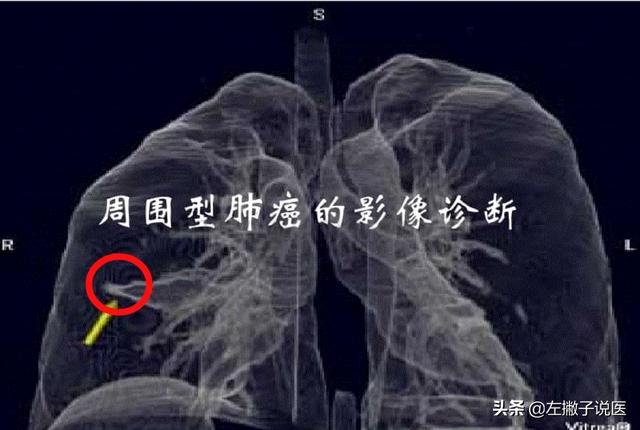
Therefore, for the early lung cancer, it may exist silently, or it may give distress signals, depending on whether we pay attention to it or not. If we ignore these distress signals given by the body, then it will develop towards the middle and late stage lung cancer, so that until there are obvious uncomfortable symptoms, and then if we go to the hospital for checkups, then it will be found that it is in the middle and late stage lung cancer.
Generally speaking, if lung cancer develops into middle or late stage lung cancer, these more obvious symptoms below will usually appear:
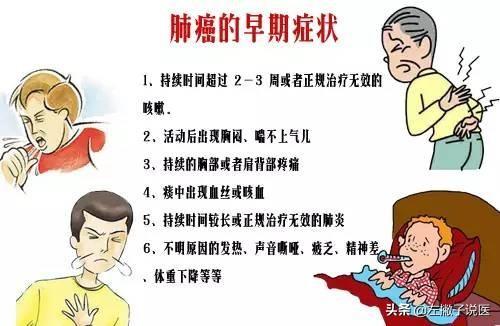
●①Persistent dry cough: this symptom has been mentioned above, that is, the malignant tumor is constantly enlarging and constantly irritating the bronchial tubes, thus causing a persistent cough.
● ② blood in sputum or coughing up blood: when the malignant tumors in the lungs continue to grow, the normal lung tissue will be damaged in the process, which will cause inflammation and hemorrhage, resulting in the phenomenon of blood in the sputum. If the malignant tumor damages some blood vessels in the lungs, then more bleeding will occur, resulting in hemoptysis.
Chest pain: Chest pain is mainly caused by malignant tumors increasing in size, thus compressing the pleura or invading the pleura, thus causing chest pain.
●④Unexplained fever: when the cancer cells in the lungs continue to proliferate and differentiate, they not only consume a lot of energy, but also produce a lot of heat, which will cause the body to become feverish, and this kind of fever often occurs over and over again.
Second, can the symptoms of the fingers indicate lung cancer?

Does the symptom of "mortar and pestle finger" indicate lung cancer? According to most lung cancer patients, many of them will have "pestle-like finger", especially in advanced lung cancer patients. This is mainly due to the fact that the lung function of advanced lung cancer patients has been seriously affected, and they cannot exchange gas normally, and they are in a state of long-term oxygen and blood shortage. As our fingers are at the end of the limbs, they are more prone to insufficient blood supply, so that the end of the fingers, in the case of long-term lack of oxygen and blood, will have proliferation and hypertrophy of the unterminal tissues, which results in the thickening of the joints of the fingers, and the abnormal swelling and bulging, which looks like a drumstick.
Although advanced lung cancer patients will have the change of "pestle finger", this "pestle finger" is not unique to advanced lung cancer, so it can affect the normal function of the lungs, and the normal body is prone to have the change of "pestle finger" when there is long-term ischemia and hypoxia, such as bronchiectasis, lung abscess, emphysema, acute infectious endocarditis, congenital heart disease, idiopathic pulmonary fibrosis, Crohn's disease. Normal body with long-term ischemia and hypoxia is prone to the change of "pestle-like finger", such as bronchiectasis, lung abscess, emphysema, subacute infective endocarditis, congenital heart disease, idiopathic pulmonary fibrosis, Crohn's disease and so on, which will all cause the change of "pestle-like finger".
Therefore, the symptom of "mortar and pestle finger" does not mean that it is lung cancer. We can't rely on the above symptoms alone to judge lung cancer, only through imaging examination and histopathological biopsy of lung tissue can we finally diagnose lung cancer, and those symptoms just let us pay attention to them and tell us to go to the hospital in time to have relevant examination when we have these uncomfortable symptoms!

Author's note: I'm very happy to popularize health-related knowledge for everyone, I'm left-handed to say medical, every day in simple language for you to popularize professional medical knowledge, the code word is not easy, if you like my article, help me to point a praise! If you still have questions, you can leave a message in the comments section, welcome to pay attention to, forward, thank you for your support!
What are the signs that your body will show when you have lung cancer? In fact it means what are the early symptoms of lung cancer?
The most common early symptom of lung cancer is coughing up sputum with blood inside the sputum, which can be said to be a very early symptom of lung cancer, but it is often misdiagnosed as acute bronchitis or pneumonia.
This is still relatively common in clinic, there was a patient who traveled to Guangzhou, suddenly relapsed coughing and coughing sputum, came to our hospital, and found that there were nodular lesions in his left lower lung, and some shadows could be seen, and at that time, this patient from the north had been treated in one of their local hospitals a month ago, and he was treated with antibiotics and sputum removing medicines for a period of time with acute bronchitis, and he had been better before he planned to travel to Guangzhou, but unexpectedly, the symptoms reappeared just a few days after he arrived, and finally he was diagnosed with non-small cell carcinoma. As a result, he did not expect the symptoms of coughing and phlegm to reappear just a few days after his arrival, and was finally diagnosed with non-small cell carcinoma. In fact, it was not easy to diagnose this patient, and we found out the cancer cells only after several tests, CT, sputum culture and so on, and the early symptoms were not obvious. Therefore, although cough and sputum can be said to be an early symptom of lung cancer, in fact, we can all realize that there are too many causes of cough and sputum and they are so frequent that they can be easily neglected!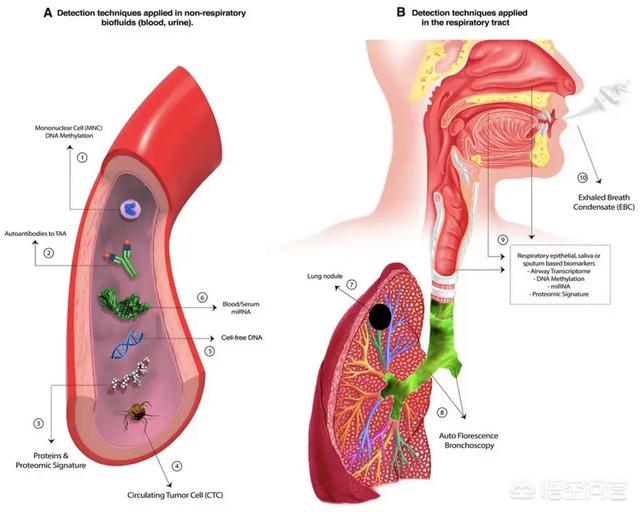
Therefore, it is recommended that especially those who have been suffering from chronic underlying diseases for a long time such as chronic bronchitis and tuberculosis should be more aware of the risk of their early lung cancer symptoms being masked by the symptoms of their previous underlying diseases!
Of course, in addition to coughing up sputum, there will be some lung patients who will experience the following symptoms
- For example, some patients experience chest pain.
- Some patients also experience dyspnea because the pleural fluid compresses the patient's lung tissue and reduces his or her effective breathing area, which can cause respiratory distress.
- Then again there are also some lung cancer patients with very insidious symptoms, who may suffer from wasting and low-grade fever.

Caution:Lung cancer patients present with symptoms not that all of them occur around the location of our lungs or our respiratory function.Rather, there are extrapulmonary manifestations of lung cancer.This is especially important to be alerted to.
Like I met a patient before who came in just looking a little bit thicker in the neck and was later diagnosed with lung cancer as well, which is often caused by lung cancer compressing the superior vena cava;
There are also some lung cancer patients who are transferred from other departments to be diagnosed with lung cancer, for example, there are some who come to the clinic because of sciatica, and some come to the clinic because of cervical spondylosis, and as a result of hospitalization, a routine chest CT is taken, and it is found to be a bone metastasis of lung cancer. Therefore, why do people have to take radiographs after being hospitalized, and part of the significance of it is here, to exclude other diseases;
Then there are other lung cancer patients who will also start to just show muscle weakness in walking, urolithiasis, etc., and there are also 1.7% of non-small cell lung cancer patients who will even experience knee pain in the early stages. Therefore, there are a lot of extrapulmonary manifestations of lung cancer, and this is often one of the reasons for misdiagnosis and underdiagnosis. This point should be understood by doctors and everyone, on the one hand, we clinicians have to improve our diagnosis and treatment level, on the other hand, we also have to know that there are some symptoms may not necessarily not necessary to hang up the oncology department, early attention to hang up the right room is also the key to early treatment of lung cancer, once the condition caused by the misunderstanding of the follow-up treatment has brought a lot of trouble.
But no matter how the symptoms come, the best way to detect early lung cancer early our doctors still emphasize that people must get a low-dose spiral CT test to go for lung cancer screening, becauseClinical symptoms often lag behind lung cancer diseaseIn order to detect early lung cancer through symptoms, the probability of late stage is more, especially for people who are at high risk of lung cancer, it is important to pay attention to health checkups!
Lung cancer is the most common malignant tumor, which is a great threat to people's health and life. It ranks first in the incidence of male malignant tumors and second in the incidence of female malignant tumors in China.
Lung cancer is associated with smoking, occupational factors, air pollution, and chronic lung infections.
The main symptoms of lung cancer include dry cough, hemoptysis, blood in sputum, chest pain, chest tightness, hoarseness, fever, emaciation, anemia and cachexia.
Early symptoms of lung cancer are not obvious, and once detected, more than 80% of them are in advanced stages, often losing the opportunity for the best treatment.
Suspicious symptoms of lung cancer include dry cough, hemoptysis and chest and back pain. Dry cough is the earliest symptom of lung cancer, especially if you have dry cough for more than two weeks without cold or pharyngitis, or if you have hemoptysis and chest and back pain, you need to go to the hospital for examination. If there is blood in sputum, you should also be alert. When you go to the hospital, take care to see a thoracic surgeon, a lung oncologist or a respiratory surgeon.
Consistently do a health checkup every year, and many health checkup packages nowadays include the examination of tumor markers, which can detect early lesions from the molecular biology point of view.
Low-dose chest CT is the most effective method of detecting early lung cancer and can detect early peripheral lung cancer at an early stage.
For people who are at high risk of lung cancer, it is recommended to have a chest CT once a year, including those who are older than 50 years old, have a history of long-term smoking or passive smoking, have a history of lung cancer in the family or have lung nodules detected in previous examinations, those who have cancer-causing factors in their work and living environments, and those who have repeated chronic injuries to the lungs, such as recurrent infections, tuberculosis, and so on. If you have smoked for more than 20 years and smoked more than one pack a day, even if you have not reached the age of 50, it is recommended that you have a low-dose chest CT once a year, so that more early lesions can be detected and treated at an early stage through physical examination.
Lung cancer is one of the major public health problems that seriously jeopardize human health. In recent years, its incidence rate has been on the rise year by year and has ranked first in the incidence rate of malignant tumors in the world. The occurrence, development, invasion and metastasis of lung cancer is an extremely complex multi-stage and multi-step process. The natural course of lung cancer from malignant transformation of cells, precancerous lesions, carcinoma in situ, invasive carcinoma or metastasis to death is 20-30 years. For example, for lung cancer caused by smoking, it takes 8-10 years for the cancer cells to grow to a diameter of 1 cm, and non-small-cell lung cancer (NSCLC) with a diameter of 1 cm will die within 2-3 years without any treatment.
I. Clinical manifestations of early lung cancer
Patients are often accompanied by a variety of typical clinical manifestations of tuberculosis, such as cough, sputum, fatigue and emaciation, low-grade fever and night sweats, and persistent chest pain.
In patients with tuberculosis combined with lung cancer, especially in the early stage of lung cancer, it is not easy to distinguish between them due to the similarity of their clinical manifestations. However, those who are combined with lung cancer still have manifestations that are different from those of patients with solitary tuberculosis, such as persistent and irritating cough, prolonged blood in sputum or intermittent hemoptysis, persistent chest pain in a fixed area, unrelated to breathing, hoarseness, unexplained osteoarthralgia, persistent weight loss or anemia when tuberculosis is stable and croupy voice in a fixed area.
II. Risk factors for lung cancer
1. Smoking, environment and occupation
Smoking is a global health problem and a major risk factor for the prevalence of lung cancer. Solid waste, particulate matter released from the consumption of biofuels (e.g., coal and firewood), and carbon monoxide can increase the risk of lung cancer. Currently, the International Agency for Research on Cancer (IARC) has identified 12 occupational exposures such as aluminum, arsenic, asbestos, coke and gas as carcinogenic to the human lung.
2. Airway diseases
Chronic obstructive pulmonary disease (COPD) is also the world's deadliest smoking-induced health problem.COPD shares the same underlying predisposition to lung cancer: high morbidity and mortality, common risk factors, and an underlying co-inflammatory process.The airflow limitation, emphysema, and acute exacerbation severity of COPD are independent risk factors for predicting lung cancer. severity of exacerbations are independent risk factors predictive of lung cancer.
3. Airway microbial status
The study confirms the link between salivary microbiota and lung cancer, noting that patients with lung cancer have significantly elevated salivary levels of Carbon dioxide-loving Cytophilus and Coccidioides spp. This combination of organisms may differentiate between squamous cell carcinoma and adenocarcinoma, and may be a potential biomarker for lung cancer detection.
4. Genetic susceptibility
A family history of lung cancer or a family history of other cancers increases the risk of lung cancer development; with a family history of cancer in a female relative being a strong predictor of lung cancer development.
First of all, early symptoms of lung cancer are not obvious, and it is easy to be confused with some common respiratory diseases, because some early symptoms of lung cancer and common respiratory diseases are almost similar, and only when the symptoms worsen, which seriously affects respiratory function, are detected after examination, so lung cancer is found in the middle or late stage.
Below, Dr. Ma answers the question of what symptoms can lung cancer cause in the human body?
1. Cough, which is a common symptom of lung cancer, mainly presents persistent metallic cough, but the cough is not obvious when the tumor grows below the lung segment, which is mainly caused by the tumor stimulating the organs and bronchial tubes, and there is not much effect of taking cough suppressant, and those who have combined with lung infections of lung cancer will have the symptom of coughing up thick sputum.
2, the emergence of pestle finger, mainly due to the lung function is impaired, resulting in the function of the respiratory system is reduced, so it is easy to lead to the peripheral parts of the oxygen supply is insufficient, it is easy to lead to the emergence of the finger head knuckles become larger, the nail bed becomes thicker, the nails appear to be uneven edges and corners, and also when there will be a painful sensation.
Chest pain and low fever. Very often, some people will consider chest pain as heart disease or gastric disease, but lung cancer will also have obvious chest pain, which is mainly due to the pain caused by the tumor involving and invading the mediastinum, and lung cancer patients will also have irregular low fever, which will recur again and again, which is mainly due to the infection caused by the necrotic tissues on the surface of the tumor shedding off.
4. Coughing up blood, this symptom is the most typical symptom of lung cancer, and it is also the symptom of lung cancer in the middle and late stages, mainly due to the fact that the tumor grows too big, which can easily lead to rupture and bleeding, and violent coughing can easily lead to the rupture of capillaries of lungs, so the symptom of coughing up blood will appear, and the serious cases will also have hemoptysis.
Follow Dr. Ma for more health answers, thank you!
This question and answer are from the site users, does not represent the position of the site, such as infringement, please contact the administrator to delete.